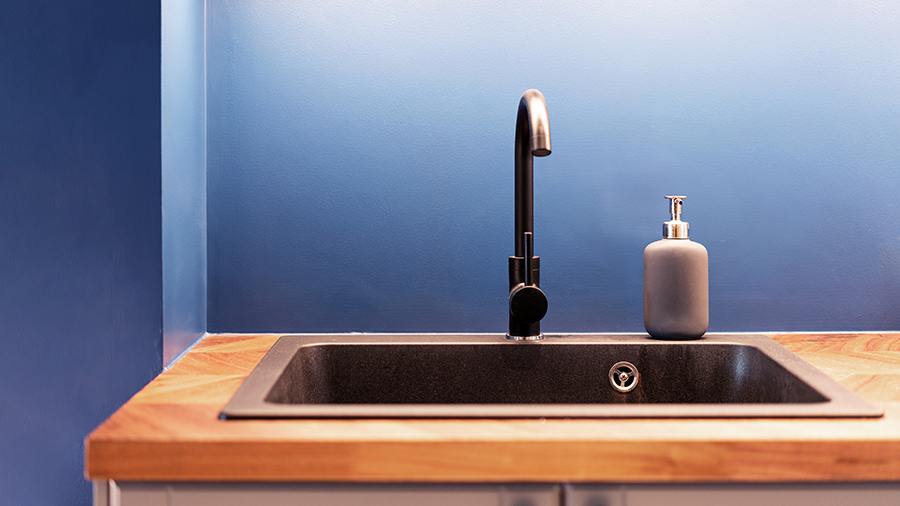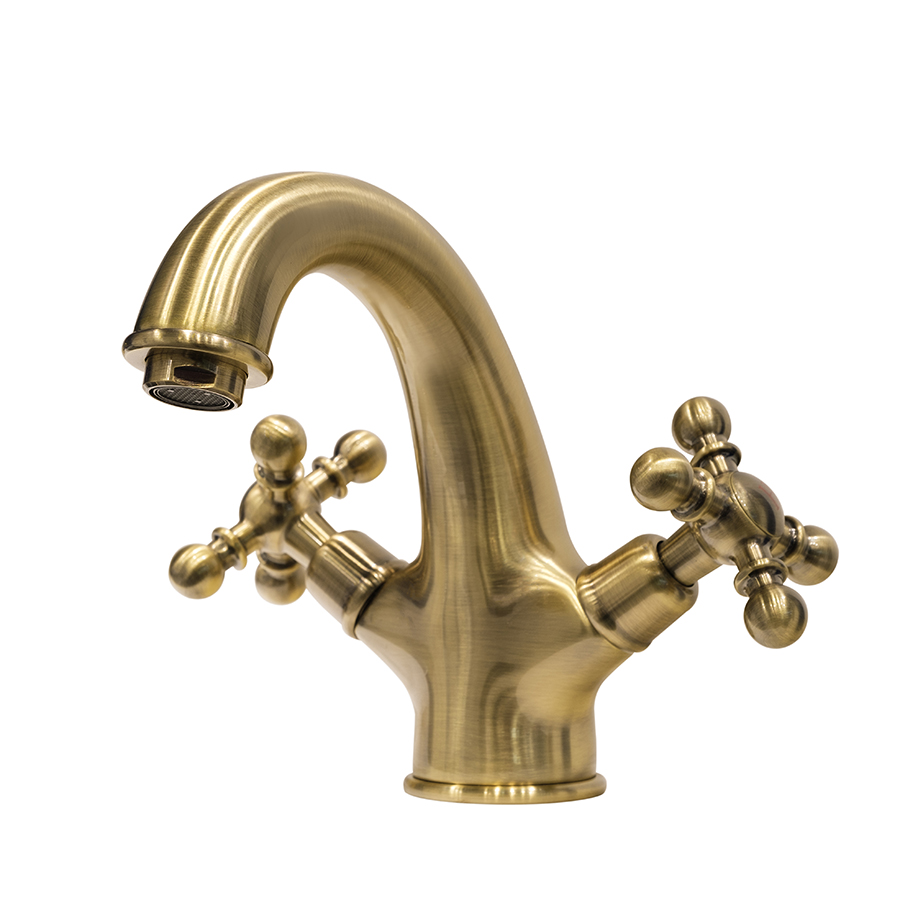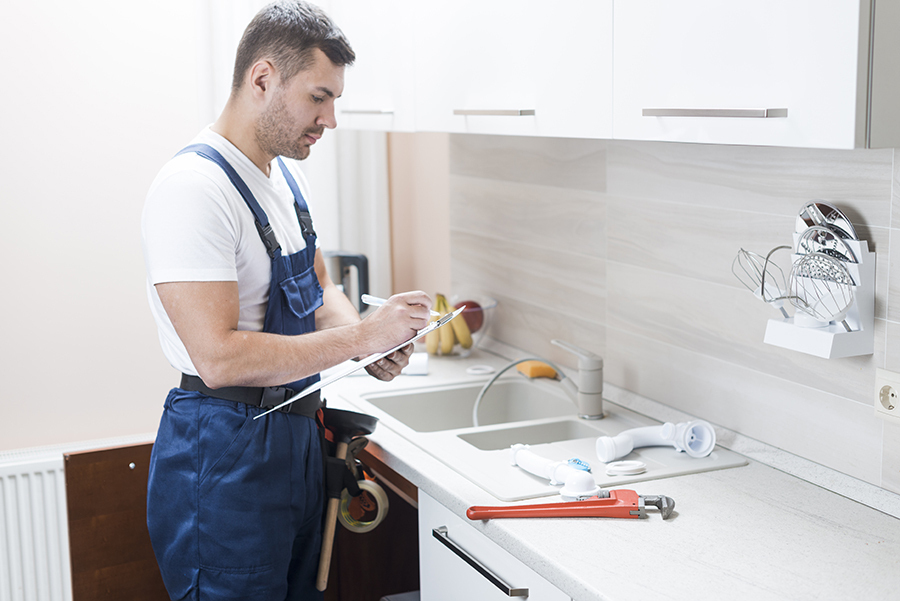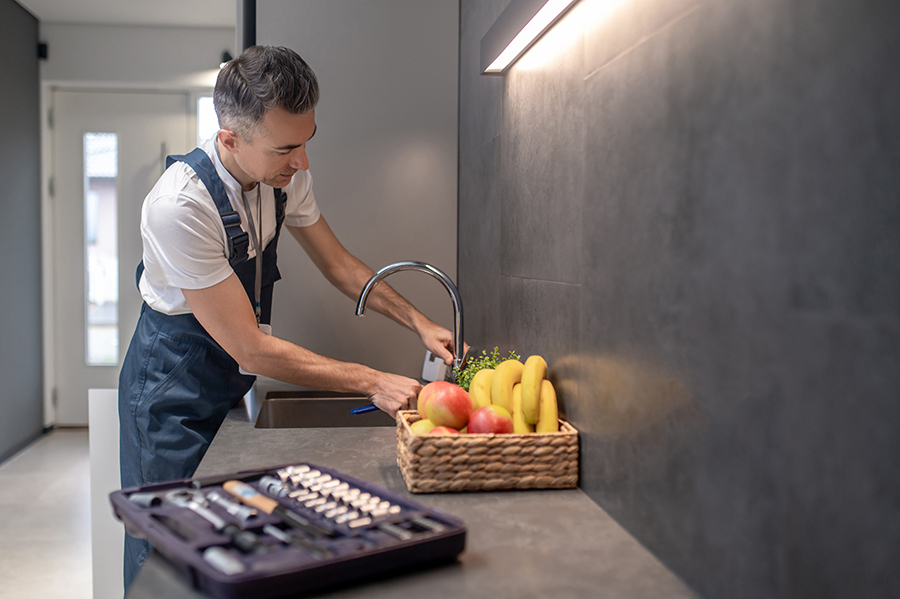Last updated on
Transform your kitchen into a luxurious space with the perfect combination of a copper sink and an oil-rubbed bronze faucet – read on to discover how!
I’ve had the pleasure of working with countless clients to create stunning decor on a budget. One particular client, let’s call her Sarah, was looking to revamp her kitchen without breaking the bank.
She had her heart set on a copper sink and an oil-rubbed bronze faucet but wasn’t quite sure if they would complement each other.
I remember walking into Sarah’s kitchen and being struck by its lackluster appearance. The walls were painted a dull beige, the cabinets were outdated, and the countertops were worn down from years of use. However, I could see beyond all that – I saw potential.
Sarah was hesitant about incorporating copper into her kitchen design because she thought it might clash with other elements in the room. But as we began discussing different options for materials and finishes, I knew that pairing a copper sink with an oil-rubbed bronze faucet would be just what this space needed.
I’ll share my experience working with Sarah to create a stunning kitchen design using these two contrasting elements – copper and oil-rubbed bronze – while staying within budget constraints.
So if you’re considering incorporating these materials into your own home decor or simply want some inspiration for your next renovation project, keep reading!
Key takeaways:
- Copper sinks are visually stunning and have several benefits.
- Oil-rubbed bronze faucets add character and warmth to a space.
- Copper sinks and oil-rubbed bronze faucets can work well together.
- Balance contrasting elements with complementary materials for a cohesive design.
- Proper installation and maintenance is key for longevity and functionality.
What's Inside
Copper Sink Benefits

When it comes to kitchen design, the sink is often an overlooked element. But a copper sink can add both style and functionality to your space.
Copper sinks are not only visually stunning but also have several benefits that make them a great choice for any kitchen.
Firstly, copper is naturally antibacterial, making it an ideal material for use in the kitchen where hygiene is of utmost importance. Copper has natural heat retention properties which means that hot water will stay warmer for longer periods of time compared to other materials like stainless steel or porcelain.
As I discussed with Sarah during our consultation session, incorporating a copper sink into her kitchen design would be both practical and aesthetically pleasing. The warm tones of the metal would complement her existing color scheme while adding depth and texture to the room.
After some research on different finishes and styles available in the market within Sarah’s budget constraints we decided on pairing this beautiful piece with an oil-rubbed bronze faucet as they create contrasting yet complementary elements when put together. If you’re looking for ways to elevate your home decor without breaking your bank account then consider incorporating unique pieces such as a copper sink paired with oil-rubbed bronze faucets into your next renovation project!
Oil-Rubbed Bronze Faucet Features

Oil-rubbed bronze has become increasingly popular in recent years due to its unique and rustic appearance.
This finish is achieved by applying a dark patina over the bronze material, resulting in an aged and weathered look.
For Sarah’s kitchen renovation project, we decided that an oil-rubbed bronze faucet would be the perfect complement to her copper sink. Not only does this finish add character and warmth to the space but it also pairs well with other materials such as wood or stone.
As we searched for the right faucet for Sarah’s kitchen design, we came across several features that made oil-rubbed bronze faucets stand out from others on the market:
- Durability: Oil-rubbed bronze finishes are known for their durability and resistance against scratches or tarnishing.
- Easy Maintenance: These types of faucets require minimal maintenance – simply wipe them down with a soft cloth after use.
- Versatility: The warm tones of oil-rubbed bronze make it easy to pair with various styles ranging from traditional farmhouse kitchens all way up modern industrial designs.
Incorporating an oil rubbed-bronze faucet into your own home decor can elevate any space while adding functionality at once.
Kitchen Design Aesthetics

Aesthetics play a crucial role in creating a space that is both functional and visually appealing. The right combination of colors, textures, and materials can transform even the most lackluster kitchen into an inviting gathering place for family and friends.
As I worked with Sarah on her kitchen renovation project, we discussed various design options that would complement her personal style while staying within budget constraints. We explored different color palettes and finishes before ultimately deciding on copper sink paired with an oil-rubbed bronze faucet.
At first glance, these two elements may seem like they wouldn’t work well together due to their contrasting colors – copper being warm-toned while oil-rubbed bronze has cooler undertones. However, when used correctly in the right setting such as Sarah’s beige-walled kitchen – they create a stunning contrast that adds depth and character to any space.
The key is finding balance between the two elements by incorporating other complementary materials such as wood or stone countertops which will help tie everything together seamlessly without overpowering one another.
When designing your own dream kitchen or working with clients who are looking for inspiration – don’t be afraid to mix metals! Copper sinks paired with oil-rubbed bronze faucets can add warmth & sophistication without breaking your budget!
Installation Tips

Once Sarah and I had decided on a copper sink and oil-rubbed bronze faucet for her kitchen, the next step was installation. While it may seem like a daunting task, with the right tools and some basic knowledge of plumbing, installing these elements can be done relatively easily.
Firstly, we made sure to measure the dimensions of both the sink and faucet before purchasing them. This ensured that they would fit perfectly into Sarah’s existing countertop space without any issues.
When it came time to install the sink itself, we followed manufacturer instructions carefully. Copper sinks are typically installed in an undermount fashion which means they sit below your countertop surface level.
We used silicone adhesive around all edges of our copper basin before lowering it into place from underneath so that there were no gaps between our new fixture & old counter top material.
For installing an oil-rubbed bronze faucet onto this type of sink requires drilling holes through its rim or deck plate if applicable (depending on model). Once again following manufacturer instructions is key here as each product will have specific requirements for installation based upon their design features such as number/size/location(s) needed etcetera!
Overall though with patience & attention-to-detail anyone can successfully install these two contrasting materials together in their own home!
Maintenance and Care

Now that we’ve established how stunning a copper sink and oil-rubbed bronze faucet can look in a kitchen, it’s important to discuss maintenance and care. As with any material or finish, proper upkeep is crucial for longevity.
When it comes to copper sinks, they require regular cleaning to maintain their luster. Copper naturally develops a patina over time which some homeowners prefer as it adds character and depth to the metal.
However, if you want your sink looking shiny and new for years to come, there are several ways you can clean it.
One method is using warm water mixed with mild soap or dish detergent along with a soft cloth or sponge. Avoid using abrasive materials like steel wool as they can scratch the surface of the copper.
As for oil-rubbed bronze faucets, they too require gentle cleaning methods so as not to damage the finish. Harsh chemicals should be avoided at all costs – instead opt for warm water mixed with mild soap or vinegar solution applied gently using a soft cloth.




